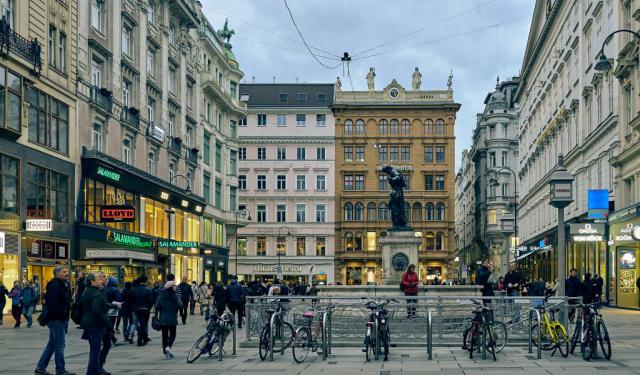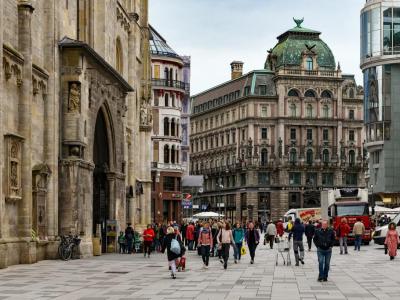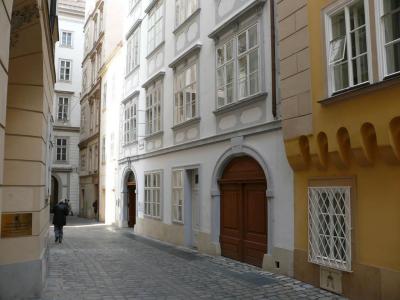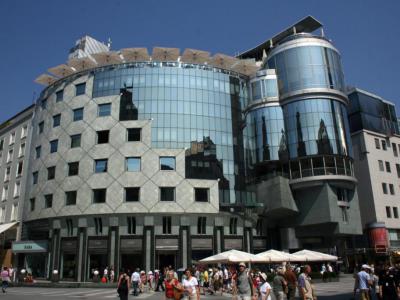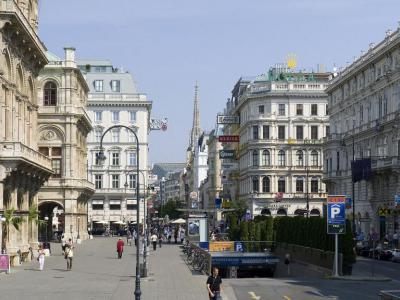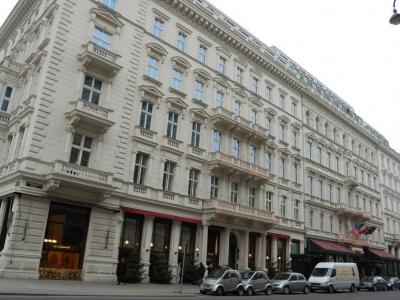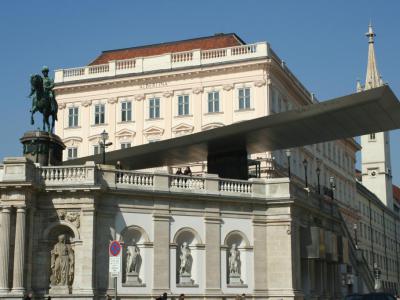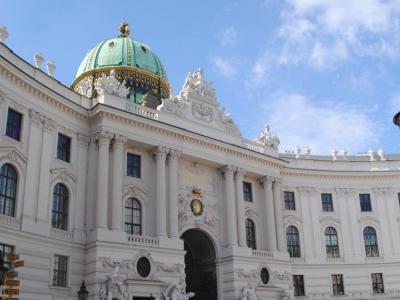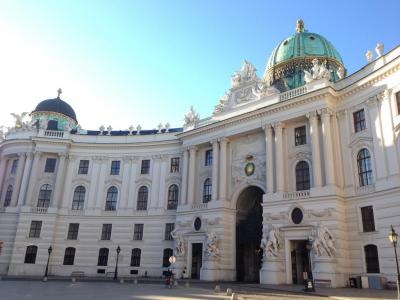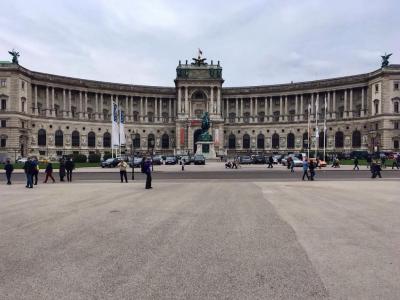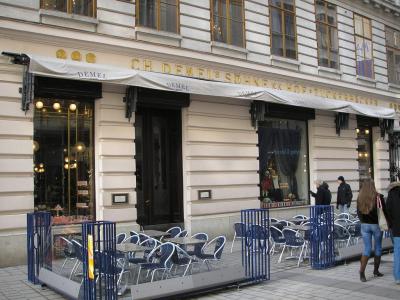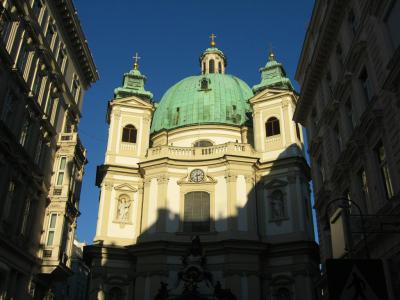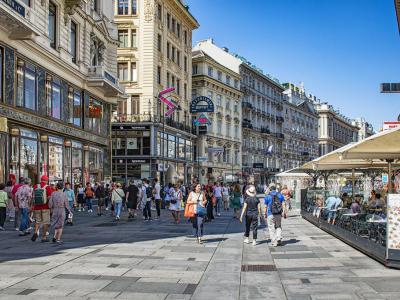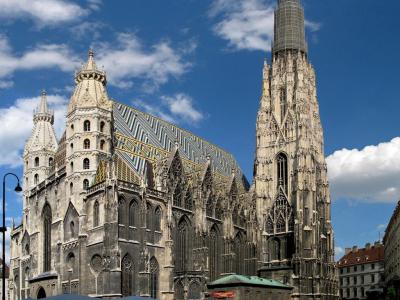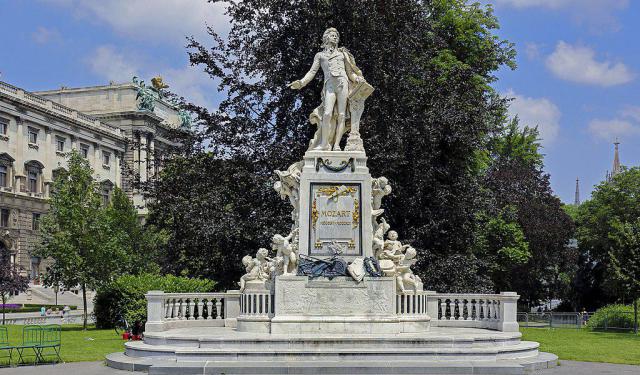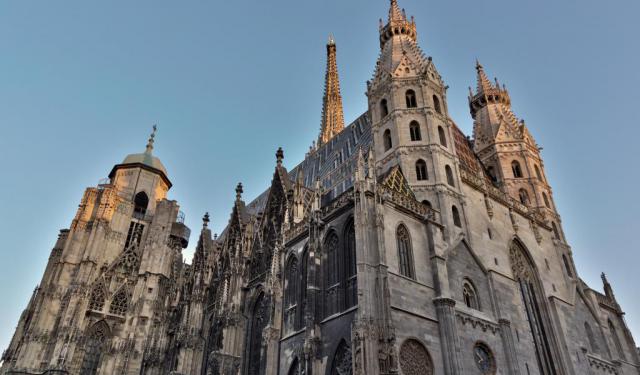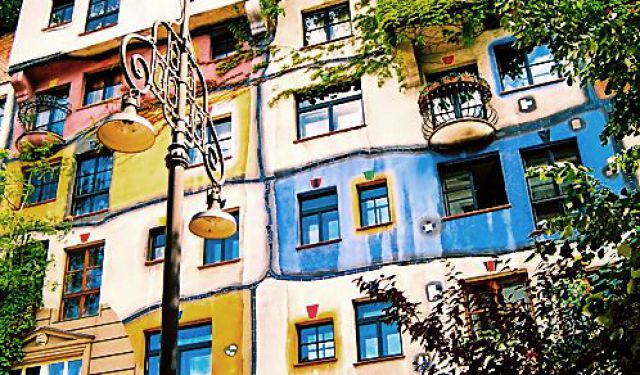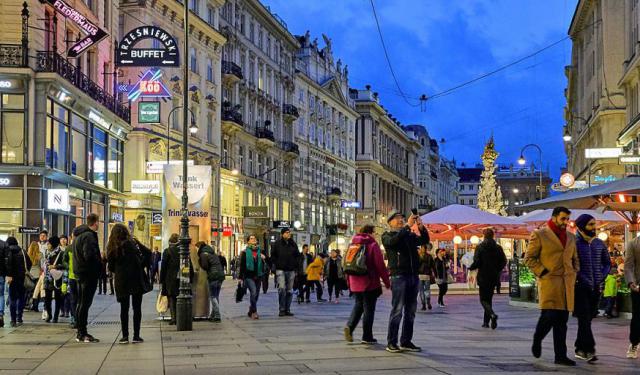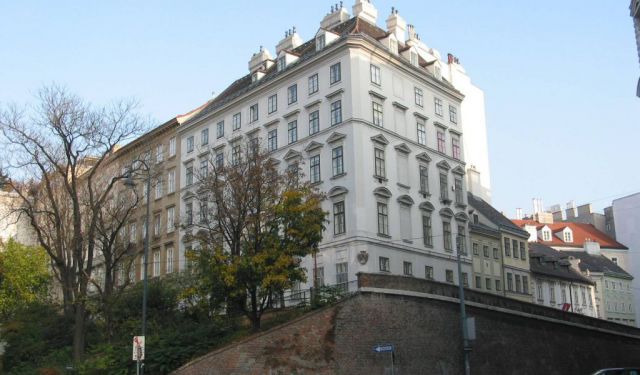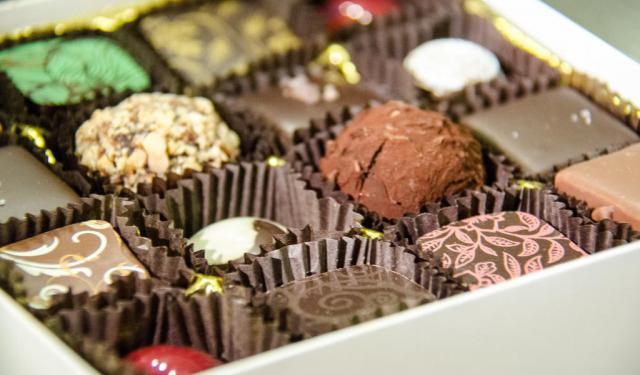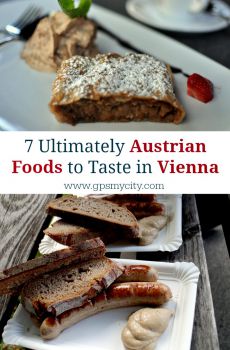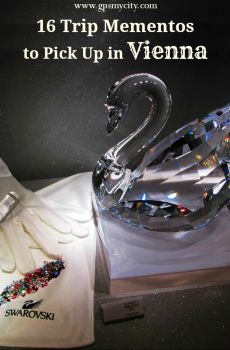Audio Guide: Vienna Old Town Walking Tour (Self Guided), Vienna
Vienna’s Old Town-the historic core of Austria’s capital and a UNESCO World Heritage Site-is where cobblestones gossip, rooftops sparkle, and emperors still seem to whisper from the walls. Indeed, this is the kind of place where every alley seems to have a PhD in European history.
Once wrapped in medieval walls-before they rolled out the grand Ringstrasse boulevard in the 19th century-this area now shines with Gothic spires, Baroque showmanship, and just enough winding streets to keep your sense of direction politely confused.
Back in Roman times, this was Vindobona, a military outpost. A few centuries later, Vienna transformed into a medieval trade hub, eventually crowned as home to the Habsburgs-Europe’s overachieving dynasty with a flair for palaces, pageantry, and powerful politics. What they left behind is nothing short of an architectural mixtape, heavy on the imperial remix.
The heartbeat of the district is St. Stephen's Square, where past and present have a stylish meet-cute. Its center stage is St. Stephen’s Cathedral-a Gothic icon with a roof that looks like a patchwork quilt and a tower with views that will leave your selfie arm sore. Right across the way, check out Haas Haus-a modern glass rebel that somehow fits right in.
Music lovers, prepare to swoon at Mozarthaus, where you can walk in the footsteps of the powdered-wigged composer prodigy himself. Nearby, at St. Michael's Square, step into the imperial orbit of the Hofburg Palace-now part-museum, part-presidential pad, part-equestrian theater, starring the high-kicking Lipizzaner horses.
When it’s time for a little indulgence, follow the scent of sophistication to Graben and Kohlmarkt, where cafés, boutiques, and general fabulousness await. For a quieter moment, duck into St. Peter’s Church, a baroque beauty that offers peace, pipe organs, and perfect acoustics.
Craving art? The Albertina Museum delivers, just a pirouette away from the State Opera. And if you’re feeling morbidly curious, the Imperial Crypt lets you pay your respects to the dearly-and opulently-departed Habsburgs.
Finish off with a stroll down Carinthian Street, grab a slice of Sacher cake at the café of the same name, and call it a perfect Viennese day.
Oh-and don’t forget to wander off the main avenues and lose yourself a little (without getting lost, courtesy of our self-guided walk) to discover quiet courtyards, tucked-away churches, and charming old bookshops. This blend of grandeur and intimacy truly defines Vienna and is where the Old Town truly shines.
Once wrapped in medieval walls-before they rolled out the grand Ringstrasse boulevard in the 19th century-this area now shines with Gothic spires, Baroque showmanship, and just enough winding streets to keep your sense of direction politely confused.
Back in Roman times, this was Vindobona, a military outpost. A few centuries later, Vienna transformed into a medieval trade hub, eventually crowned as home to the Habsburgs-Europe’s overachieving dynasty with a flair for palaces, pageantry, and powerful politics. What they left behind is nothing short of an architectural mixtape, heavy on the imperial remix.
The heartbeat of the district is St. Stephen's Square, where past and present have a stylish meet-cute. Its center stage is St. Stephen’s Cathedral-a Gothic icon with a roof that looks like a patchwork quilt and a tower with views that will leave your selfie arm sore. Right across the way, check out Haas Haus-a modern glass rebel that somehow fits right in.
Music lovers, prepare to swoon at Mozarthaus, where you can walk in the footsteps of the powdered-wigged composer prodigy himself. Nearby, at St. Michael's Square, step into the imperial orbit of the Hofburg Palace-now part-museum, part-presidential pad, part-equestrian theater, starring the high-kicking Lipizzaner horses.
When it’s time for a little indulgence, follow the scent of sophistication to Graben and Kohlmarkt, where cafés, boutiques, and general fabulousness await. For a quieter moment, duck into St. Peter’s Church, a baroque beauty that offers peace, pipe organs, and perfect acoustics.
Craving art? The Albertina Museum delivers, just a pirouette away from the State Opera. And if you’re feeling morbidly curious, the Imperial Crypt lets you pay your respects to the dearly-and opulently-departed Habsburgs.
Finish off with a stroll down Carinthian Street, grab a slice of Sacher cake at the café of the same name, and call it a perfect Viennese day.
Oh-and don’t forget to wander off the main avenues and lose yourself a little (without getting lost, courtesy of our self-guided walk) to discover quiet courtyards, tucked-away churches, and charming old bookshops. This blend of grandeur and intimacy truly defines Vienna and is where the Old Town truly shines.
How it works: Download the app "GPSmyCity: Walks in 1K+ Cities" from Apple App Store or Google Play Store to your mobile phone or tablet. The app turns your mobile device into a personal tour guide and its built-in GPS navigation functions guide you from one tour stop to next. The app works offline, so no data plan is needed when traveling abroad.
Vienna Old Town Walking Tour Map
Guide Name: Vienna Old Town Walking Tour
Guide Location: Austria » Vienna (See other walking tours in Vienna)
Guide Type: Self-guided Walking Tour (Sightseeing)
# of Attractions: 14
Tour Duration: 2 Hour(s)
Travel Distance: 2.9 Km or 1.8 Miles
Author: leticia
Sight(s) Featured in This Guide:
Guide Location: Austria » Vienna (See other walking tours in Vienna)
Guide Type: Self-guided Walking Tour (Sightseeing)
# of Attractions: 14
Tour Duration: 2 Hour(s)
Travel Distance: 2.9 Km or 1.8 Miles
Author: leticia
Sight(s) Featured in This Guide:
- Stephansplatz (St. Stephen's Square)
- Mozarthaus (Mozart's Former Residence)
- Haas House
- Karntner Straße (Carinthian Street)
- Sacher Cafe
- Albertina Museum
- Imperial Crypt
- Spanische Reitschule (Spanish Riding School)
- Michaelerplatz (Saint Michael's Square)
- Hofburg Imperial Palace
- Demel
- Peterskirche (St. Peter's Church)
- Graben Street
- Stephansdom (St. Stephen's Cathedral)
1) Stephansplatz (St. Stephen's Square)
St. Stephen's Square-Vienna’s beating heart-is the kind of square that doesn’t just mark the center of the city, but commands it with flair.
Named after the towering St. Stephen’s Cathedral, a Gothic powerhouse of stone and spire, this cathedral is not merely Vienna’s main church-it’s one of the tallest in the world. Basically, if you're anywhere nearby and don’t see it, check your glasses...
Back in the day-before the 20th century, that is-this square and the nearby Stock-im-Eisen-Platz were awkward neighbors separated by a row of buildings. Those were eventually knocked down, and voilà, a grand unification. Now, St. Stephen's Square graciously includes the whole area, like a generous host absorbing the entire block party.
To the west and south, the scene gets posh with Graben Street (which literally translates as "the Ditch," though it’s far more champagne than shovel these days) and Carinthian Street, named so after the Carinthia region of Austria, but now better known for shopping that could make your wallet nervous.
And then there’s Haas Haus, lounging across from St. Stephen’s Cathedral like the cool, modern cousin at a family reunion. Designed by Hans Hollein and made of glass, steel, and unapologetic modernism, it was once the source of much civic side-eye. Now it’s celebrated as the poster child for architectural harmony: medieval meets mirror-polished millennium.
While this square may not be the best location for fine dining-unless your idea of haute cuisine is a schnitzel sandwich-sitting in one of the local cafés provides you with the front row for the city’s greatest spectacle: the people of Vienna. Locals, tourists, street performers, and the occasional opera enthusiast all sweep through under the cathedral’s watchful gaze.
So pull up a chair, order something strong, and take it all in-because this is more than just a square. It’s Vienna condensed...
Tip:
Stroll around the cathedral’s side and you’ll find its miniature version. It’s like someone said, “Let’s make it travel-sized,” and it’s oddly satisfying. Great for photos, or just for pretending you’re a giant for a moment.
Named after the towering St. Stephen’s Cathedral, a Gothic powerhouse of stone and spire, this cathedral is not merely Vienna’s main church-it’s one of the tallest in the world. Basically, if you're anywhere nearby and don’t see it, check your glasses...
Back in the day-before the 20th century, that is-this square and the nearby Stock-im-Eisen-Platz were awkward neighbors separated by a row of buildings. Those were eventually knocked down, and voilà, a grand unification. Now, St. Stephen's Square graciously includes the whole area, like a generous host absorbing the entire block party.
To the west and south, the scene gets posh with Graben Street (which literally translates as "the Ditch," though it’s far more champagne than shovel these days) and Carinthian Street, named so after the Carinthia region of Austria, but now better known for shopping that could make your wallet nervous.
And then there’s Haas Haus, lounging across from St. Stephen’s Cathedral like the cool, modern cousin at a family reunion. Designed by Hans Hollein and made of glass, steel, and unapologetic modernism, it was once the source of much civic side-eye. Now it’s celebrated as the poster child for architectural harmony: medieval meets mirror-polished millennium.
While this square may not be the best location for fine dining-unless your idea of haute cuisine is a schnitzel sandwich-sitting in one of the local cafés provides you with the front row for the city’s greatest spectacle: the people of Vienna. Locals, tourists, street performers, and the occasional opera enthusiast all sweep through under the cathedral’s watchful gaze.
So pull up a chair, order something strong, and take it all in-because this is more than just a square. It’s Vienna condensed...
Tip:
Stroll around the cathedral’s side and you’ll find its miniature version. It’s like someone said, “Let’s make it travel-sized,” and it’s oddly satisfying. Great for photos, or just for pretending you’re a giant for a moment.
2) Mozarthaus (Mozart's Former Residence)
Out of the eleven places Mozart once called home in Vienna, only one is still standing-and lucky for us, it’s the Mozarthaus at Domgasse 5. Restored in 2006 to mark what would’ve been his 250th birthday, this is where the maestro supposedly had his happiest-and most productive-years. Think: Haydn-dedicated string quartets, a sprinkling of piano concertos, and, of course, The Marriage of Figaro and Don Giovanni. Not a bad output for one address...
Sadly, like many good things in life, the golden days didn’t last. Financial woes eventually pushed Mozart out to the suburbs-a polite way of saying, “the rent was too damn high.”
Now, before you get too excited: no original furniture here, folks. But that’s actually a plus-because instead of staring at dusty chairs, you’ll dive straight into the brain of a genius. The museum lets you imagine the space as it once was: spacious, elegant, and echoing with arpeggios. And yes, they do host concerts and even a few activities to keep the little ones from turning feral.
Here’s a pro tip: start at the top. Take the lift to the third floor and work your way down. Begin with Mozart the wonder-child, dazzling 18th-century Europe. Then descend into the delightful chaos of his Vienna years, peppered with gambling, womanizing, and a jaw-dropping knack for draining bank accounts. The second floor gets theatrical, literally, as you explore his operas-some in surround sound. And the first floor is the main event: the very rooms where musical magic once happened.
And in case you wonder, why go? Because nowhere else did Mozart compose more music, more joy, or more drama. It’s your chance to walk the parquet path of a legend, right in the heart of Vienna.
Bonus tip: Want to save a few Euros? Combine your ticket with a visit to Haus der Musik or the Dom Museum Wien. Mozart would approve-he loved a good deal...
Sadly, like many good things in life, the golden days didn’t last. Financial woes eventually pushed Mozart out to the suburbs-a polite way of saying, “the rent was too damn high.”
Now, before you get too excited: no original furniture here, folks. But that’s actually a plus-because instead of staring at dusty chairs, you’ll dive straight into the brain of a genius. The museum lets you imagine the space as it once was: spacious, elegant, and echoing with arpeggios. And yes, they do host concerts and even a few activities to keep the little ones from turning feral.
Here’s a pro tip: start at the top. Take the lift to the third floor and work your way down. Begin with Mozart the wonder-child, dazzling 18th-century Europe. Then descend into the delightful chaos of his Vienna years, peppered with gambling, womanizing, and a jaw-dropping knack for draining bank accounts. The second floor gets theatrical, literally, as you explore his operas-some in surround sound. And the first floor is the main event: the very rooms where musical magic once happened.
And in case you wonder, why go? Because nowhere else did Mozart compose more music, more joy, or more drama. It’s your chance to walk the parquet path of a legend, right in the heart of Vienna.
Bonus tip: Want to save a few Euros? Combine your ticket with a visit to Haus der Musik or the Dom Museum Wien. Mozart would approve-he loved a good deal...
3) Haas House
Imagine being asked to build a shiny, modern building right across from the Gothic grandeur of Saint Stephen’s Cathedral-the architectural equivalent of dancing next to a brooding vampire in neon sneakers. That’s exactly what the city of Vienna asked of Hans Hollein, Austria’s Postmodernist maestro known for his dazzling, no-compromise jewelry stores on the elegant Graben and Kohlmarkt streets. His answer was the Haas Haus, unveiled in 1990 like a mirror-polished shrug at tradition.
This gleaming, partly mirrored marvel made of glass, steel, and blue-green marble doesn’t just sit across from the cathedral-it poses across from it. Its curves lean confidently into the street, reflecting the spires opposite like a futuristic wink at the past. The design is all pleasing asymmetry: lopsided marble cubes glued to the façade like sculptural confetti, a mysterious platform high up that looks like a diving board for very brave architects, and even a Zen-like bridge inside for those who seek inner peace between shops and lattes.
Rather than bowing to the stiff collar of Historicism or charging ahead with cold Modernism, Hollein delivered something smarter: a stylish peace treaty between eras. Haas Haus respects its Gothic neighbor by daring to be different, yet harmonizing through reflection-literally.
Inside, the building is more than a pretty face. It houses a collection of cafes, chic shops, a fine restaurant, and the upscale DO & CO Hotel, where the views are as premium as the service.
Pro tip: Take the elevator to the rooftop café and savor the spectacular view of Saint Stephen’s while sipping your coffee like an enlightened time traveler.
Or if you're feeling more tea than tech, stroll over to the nearby HAAS & HAAS Teahouse, tucked just beside the Cathedral. Open Monday to Saturday from 8 am to 8 pm (and a touch sleepier on Sundays and holidays), it’s the perfect blend of Old World charm and steeped serenity.
Because in Vienna, even the contrasts know how to get along...
This gleaming, partly mirrored marvel made of glass, steel, and blue-green marble doesn’t just sit across from the cathedral-it poses across from it. Its curves lean confidently into the street, reflecting the spires opposite like a futuristic wink at the past. The design is all pleasing asymmetry: lopsided marble cubes glued to the façade like sculptural confetti, a mysterious platform high up that looks like a diving board for very brave architects, and even a Zen-like bridge inside for those who seek inner peace between shops and lattes.
Rather than bowing to the stiff collar of Historicism or charging ahead with cold Modernism, Hollein delivered something smarter: a stylish peace treaty between eras. Haas Haus respects its Gothic neighbor by daring to be different, yet harmonizing through reflection-literally.
Inside, the building is more than a pretty face. It houses a collection of cafes, chic shops, a fine restaurant, and the upscale DO & CO Hotel, where the views are as premium as the service.
Pro tip: Take the elevator to the rooftop café and savor the spectacular view of Saint Stephen’s while sipping your coffee like an enlightened time traveler.
Or if you're feeling more tea than tech, stroll over to the nearby HAAS & HAAS Teahouse, tucked just beside the Cathedral. Open Monday to Saturday from 8 am to 8 pm (and a touch sleepier on Sundays and holidays), it’s the perfect blend of Old World charm and steeped serenity.
Because in Vienna, even the contrasts know how to get along...
4) Karntner Straße (Carinthian Street)
Some may regard Carinthian Street as Vienna’s answer to the question: “What if shopping felt like strolling through a history book with a platinum credit card?” As one leg of the city’s so-called “Golden U” (alongside the Graben and Kohlmarkt), this pedestrian paradise isn’t just about luxury bags and pastry breaks-it’s a street with serious pedigree.
Indeed, its roots are deep. We’re talking Roman-deep. First mentioned in 1257 as Strata Carinthianorum, it once served as a vital lifeline between Vienna’s city center and the Carinthian Gate, just around where the Vienna State Opera raises its curtain today. Back in the day, this was the road to the Mediterranean, linking traders to port cities like Venice and Trieste. So yes, shopping here has always had a bit of flair.
Named after the southern Austrian state of Carinthia, the street has worn many hats over the centuries. But it hit its architectural stride in the 19th century when Vienna said, “Let’s go big or go baroque.” The street was expanded, lined with palatial buildings, and decked out in full historicist regalia-dramatic façades and a flair for the ornate.
Then came World War II, and with it, devastation. Carinthian Street was badly damaged and later rebuilt with a sleek, modernist look-minimalist, functional, and, let’s be honest, a little less theatrical. But Vienna being Vienna, it didn’t stay plain for long...
In 1974, the city waved goodbye to cars and hello to café-lined promenades as Carinthian Street was reborn as a pedestrian zone, perfectly synced with the arrival of the U-Bahn below.
Today, it’s the city’s cultural catwalk. You’ve got the Vienna State Opera, Todesco Palace, Equitable Palace, the legendary Hotel Sacher (home of that devilishly good chocolate cake), and quieter gems like the Maltese Church and Esterházy Palace.
So whether you’re here for the architecture, the fashion, the music, or just a slice of Sacher Torte (that could bring a tear to your eye), Carinthian Street offers you Vienna in its full, glamorous stride. Just keep walking...
Indeed, its roots are deep. We’re talking Roman-deep. First mentioned in 1257 as Strata Carinthianorum, it once served as a vital lifeline between Vienna’s city center and the Carinthian Gate, just around where the Vienna State Opera raises its curtain today. Back in the day, this was the road to the Mediterranean, linking traders to port cities like Venice and Trieste. So yes, shopping here has always had a bit of flair.
Named after the southern Austrian state of Carinthia, the street has worn many hats over the centuries. But it hit its architectural stride in the 19th century when Vienna said, “Let’s go big or go baroque.” The street was expanded, lined with palatial buildings, and decked out in full historicist regalia-dramatic façades and a flair for the ornate.
Then came World War II, and with it, devastation. Carinthian Street was badly damaged and later rebuilt with a sleek, modernist look-minimalist, functional, and, let’s be honest, a little less theatrical. But Vienna being Vienna, it didn’t stay plain for long...
In 1974, the city waved goodbye to cars and hello to café-lined promenades as Carinthian Street was reborn as a pedestrian zone, perfectly synced with the arrival of the U-Bahn below.
Today, it’s the city’s cultural catwalk. You’ve got the Vienna State Opera, Todesco Palace, Equitable Palace, the legendary Hotel Sacher (home of that devilishly good chocolate cake), and quieter gems like the Maltese Church and Esterházy Palace.
So whether you’re here for the architecture, the fashion, the music, or just a slice of Sacher Torte (that could bring a tear to your eye), Carinthian Street offers you Vienna in its full, glamorous stride. Just keep walking...
5) Sacher Cafe
If you're on a mission to track down the best chocolate cake in Vienna-if not on Earth-then point your sweet tooth straight toward Café Sacher. Now, this isn’t just any cake shop-it’s the birthplace of the legendary Original Sacher-Torte, first whipped up in 1832 by young Franz Sacher for a Habsburg royal party. Apparently, the emperor needed dessert, the head chef was sick, and history was made with a spatula.
Decades later, in 1876, Franz’s son Ed Sacher opened the now-iconic Sacher Hotel and its equally iconic café. Ed didn’t stick around long, passing away just 16 years later, but his wife Anna took the reins like a true empress of pastry. Under her watch, the hotel and cake brand rose to international fame-think of her as the Beyoncé of Viennese hospitality...
Since 1934, the whole operation has been in the hands of the Gürtler family, and the place's guestbook reads like a who’s who of global royalty and icons: Gandhi, Queen Elizabeth II, John F. Kennedy… all graced the café with their presence, presumably seduced by that rich chocolate glaze and discreet charm.
Now, here’s the best part: even if you're pinching euros, a fairly modest sum will land you a genuinely good coffee and a slice of chocolate royalty on a plate. No need to break the bank to live deliciously.
Insider tip: Beyond the main café, the Sacher Hotel houses three rather swanky salons-each in its own chic color scheme-plus the two-story Eck, which gives you a side of Opera House views with your whipped cream. And if the main café’s packed (which it often is), just slip next door to Sacher Stube, run by the same family and serving the same glorious torte.
Oh, and about the coffee-if you’re not sure what to order, play it classic. Go for a "Einspänner"-Vienna’s beloved black coffee topped with foamed milk and a dollop of whipped cream. It’s the perfect companion for that slice of legend.
Trust us-this is one cake worth crossing a continent for...
Decades later, in 1876, Franz’s son Ed Sacher opened the now-iconic Sacher Hotel and its equally iconic café. Ed didn’t stick around long, passing away just 16 years later, but his wife Anna took the reins like a true empress of pastry. Under her watch, the hotel and cake brand rose to international fame-think of her as the Beyoncé of Viennese hospitality...
Since 1934, the whole operation has been in the hands of the Gürtler family, and the place's guestbook reads like a who’s who of global royalty and icons: Gandhi, Queen Elizabeth II, John F. Kennedy… all graced the café with their presence, presumably seduced by that rich chocolate glaze and discreet charm.
Now, here’s the best part: even if you're pinching euros, a fairly modest sum will land you a genuinely good coffee and a slice of chocolate royalty on a plate. No need to break the bank to live deliciously.
Insider tip: Beyond the main café, the Sacher Hotel houses three rather swanky salons-each in its own chic color scheme-plus the two-story Eck, which gives you a side of Opera House views with your whipped cream. And if the main café’s packed (which it often is), just slip next door to Sacher Stube, run by the same family and serving the same glorious torte.
Oh, and about the coffee-if you’re not sure what to order, play it classic. Go for a "Einspänner"-Vienna’s beloved black coffee topped with foamed milk and a dollop of whipped cream. It’s the perfect companion for that slice of legend.
Trust us-this is one cake worth crossing a continent for...
6) Albertina Museum (must see)
If you’re an art lover roaming Vienna with stars in your eyes and time to spare-stop right there. You’ve just found your holy grail: the Albertina. Housed in the largest residential palace of the ever-fancy Habsburgs, this museum is the heavyweight champ of graphic art. We’re talking over 65,000 watercolors and drawings, 70,000 photographs, and a stack of priceless prints that would make even da Vinci blush-and yes, he’s in the collection too, alongside Michelangelo, Raphael, Rembrandt, and the rest of the Renaissance dream team.
But wait, it’s not all parchment and powdered wigs. The Batliner Collection brings you straight into the bold world of modernism. Here, Monet, Degas, Cézanne, and Picasso throw a visual party with their impressionist pals, while Fauvism, Brücke, Cubism, and Surrealism crash the scene. It’s the perfect wild counterpoint to the orderly elegance of the Art History Museum-think of it as Vienna’s more rebellious cousin.
If Klimt or Schiele makes your heart flutter-well, good news. The Albertina’s got them too, in all their golden, tormented glory.
And speaking of atmosphere, recent renovations gave the place back its shine, from regal façades to a grand central courtyard. When you’re ready for a break from art-staring, the onsite DO & CO café offers delicious distractions-coffee, desserts, light meals, and unbeatable views over Vienna’s historic center. Don’t skip the nearby Burggarten either for a breezy pause among the greenery. And yes, there’s a gift shop on your way out-books, souvenirs, and Vienna-themed treasures to prove to your friends that you have excellent taste.
So, the answer to “Why swing by?” here is very simple. Because it’s stunning. Because the collection is world-class. Because you can skip the lines with an online ticket and feel like a VIP. And because the top-floor balcony is the ultimate selfie spot-Vienna’s historic skyline included.
Hot tip:
Block out at least 2.5 hours-you’ll need it. And if you want the full experience, grab the audio guide. It’s not just informative-it’s your witty, well-read companion through centuries of genius.
Now go, and let the masters blow your mind...
But wait, it’s not all parchment and powdered wigs. The Batliner Collection brings you straight into the bold world of modernism. Here, Monet, Degas, Cézanne, and Picasso throw a visual party with their impressionist pals, while Fauvism, Brücke, Cubism, and Surrealism crash the scene. It’s the perfect wild counterpoint to the orderly elegance of the Art History Museum-think of it as Vienna’s more rebellious cousin.
If Klimt or Schiele makes your heart flutter-well, good news. The Albertina’s got them too, in all their golden, tormented glory.
And speaking of atmosphere, recent renovations gave the place back its shine, from regal façades to a grand central courtyard. When you’re ready for a break from art-staring, the onsite DO & CO café offers delicious distractions-coffee, desserts, light meals, and unbeatable views over Vienna’s historic center. Don’t skip the nearby Burggarten either for a breezy pause among the greenery. And yes, there’s a gift shop on your way out-books, souvenirs, and Vienna-themed treasures to prove to your friends that you have excellent taste.
So, the answer to “Why swing by?” here is very simple. Because it’s stunning. Because the collection is world-class. Because you can skip the lines with an online ticket and feel like a VIP. And because the top-floor balcony is the ultimate selfie spot-Vienna’s historic skyline included.
Hot tip:
Block out at least 2.5 hours-you’ll need it. And if you want the full experience, grab the audio guide. It’s not just informative-it’s your witty, well-read companion through centuries of genius.
Now go, and let the masters blow your mind...
7) Imperial Crypt
Just beneath Vienna’s bustling New Market square-right next to the Hofburg Palace and well within ghost-whispering distance of history-you’ll find the Imperial Crypt, also known as the Capuchin Crypt. Sounds mysterious? Oh, it is indeed. This underground vault has been hosting the who’s-who of the Habsburg dynasty since 1633, and let's just say... the guest list is pretty exclusive.
The idea for this eternal VIP lounge came from Anna of Tyrol, wife of Emperor Matthias. In a rather poetic twist, she signed off on the funds in her will in 1617 and died a year later, followed promptly by her husband. Talk about a couple with a plan...
Formally consecrated in 1632, the crypt now holds 145 Habsburgs, including 12 emperors and 18 empresses. And for those who preferred a more minimalist approach to eternal rest, there are also heart urns-because why be buried once when you can be distributed like royalty?
Inside, you’ll find 107 ornate metal sarcophagi ranging from “modestly morbid” to “rococo realness.” It’s part cemetery, part sculpture gallery, and part history lesson with a Gothic flourish.
Come to think of it, this isn’t just a tomb. It’s the final chapter of an empire written in bronze and baroque. It’s where Vienna whispers her imperial secrets. And let’s be honest-what’s a trip to Vienna without a little royal drama from six feet under?
The idea for this eternal VIP lounge came from Anna of Tyrol, wife of Emperor Matthias. In a rather poetic twist, she signed off on the funds in her will in 1617 and died a year later, followed promptly by her husband. Talk about a couple with a plan...
Formally consecrated in 1632, the crypt now holds 145 Habsburgs, including 12 emperors and 18 empresses. And for those who preferred a more minimalist approach to eternal rest, there are also heart urns-because why be buried once when you can be distributed like royalty?
Inside, you’ll find 107 ornate metal sarcophagi ranging from “modestly morbid” to “rococo realness.” It’s part cemetery, part sculpture gallery, and part history lesson with a Gothic flourish.
Come to think of it, this isn’t just a tomb. It’s the final chapter of an empire written in bronze and baroque. It’s where Vienna whispers her imperial secrets. And let’s be honest-what’s a trip to Vienna without a little royal drama from six feet under?
8) Spanische Reitschule (Spanish Riding School)
A place where grace trots, tradition gallops, and stallions pirouette like it’s the 18th century-welcome to Vienna's Spanish Riding School!
Founded back in 1565-yes, that’s way before Mozart-this is the world’s oldest school for classical dressage. In essence, it'd be fair to describe it as a choreography of hooves, history, and imperial flair. The current hall, a baroque beauty with 46 columns and a royal box fit for an emperor’s ego, was commissioned in 1729 by Emperor Karl VI-who still gets a tip of the hat from every rider, thanks to his portrait hanging proudly above the arena. The school courtyard is adorned with an equestrian statue of another emperor, Josef II.
Now, why "Spanish"? No, it's not because the horses love tapas. The name comes from the noble Spanish breeds that helped create the Lipizzaner-those elegant, snow-white stallions you’ve seen leaping like ballerinas (with better muscle tone). The breed was born by mixing Arab, Berber, and Spanish horses at the Lipizza stud farm near Trieste, Slovenia. Training starts when they're three, and from there, it’s years of disciplined dance moves-no shortcuts, no TikTok trends...
For centuries, only men could join this elite club, but as of 2008, the glass stirrup finally broke-women can ride too, and brilliantly so.
So what can you expect? Public performances run 70 to 90 minutes of precision, music, and magic that hasn't changed in decades-because when perfection works, you don’t fix it. Anyone who's a horse fanatic or just likes chandeliers and symmetry, will find the Spanish Riding School a uniquely Viennese blend of pomp, polish, and prancing. But even if you are not fond of horse shows, a guided tour (in English or German) through the stabling and the riding arena is worth a visit anytime.
Pro tips:
Morning training sessions are cheaper and give you a behind-the-scenes glimpse of the stallions at work.
Want the full airborne extravaganza? Book the official show. Just book early unless you enjoy queuing like it's 1765.
And here's the real scoop: grab a coffee at the on-site café. It's reasonably priced, and the terrace gives you free views of the horses warming up next door. That’s right-free of charge! Elegance on a budget? Yes, Vienna delivers...
Founded back in 1565-yes, that’s way before Mozart-this is the world’s oldest school for classical dressage. In essence, it'd be fair to describe it as a choreography of hooves, history, and imperial flair. The current hall, a baroque beauty with 46 columns and a royal box fit for an emperor’s ego, was commissioned in 1729 by Emperor Karl VI-who still gets a tip of the hat from every rider, thanks to his portrait hanging proudly above the arena. The school courtyard is adorned with an equestrian statue of another emperor, Josef II.
Now, why "Spanish"? No, it's not because the horses love tapas. The name comes from the noble Spanish breeds that helped create the Lipizzaner-those elegant, snow-white stallions you’ve seen leaping like ballerinas (with better muscle tone). The breed was born by mixing Arab, Berber, and Spanish horses at the Lipizza stud farm near Trieste, Slovenia. Training starts when they're three, and from there, it’s years of disciplined dance moves-no shortcuts, no TikTok trends...
For centuries, only men could join this elite club, but as of 2008, the glass stirrup finally broke-women can ride too, and brilliantly so.
So what can you expect? Public performances run 70 to 90 minutes of precision, music, and magic that hasn't changed in decades-because when perfection works, you don’t fix it. Anyone who's a horse fanatic or just likes chandeliers and symmetry, will find the Spanish Riding School a uniquely Viennese blend of pomp, polish, and prancing. But even if you are not fond of horse shows, a guided tour (in English or German) through the stabling and the riding arena is worth a visit anytime.
Pro tips:
Morning training sessions are cheaper and give you a behind-the-scenes glimpse of the stallions at work.
Want the full airborne extravaganza? Book the official show. Just book early unless you enjoy queuing like it's 1765.
And here's the real scoop: grab a coffee at the on-site café. It's reasonably priced, and the terrace gives you free views of the horses warming up next door. That’s right-free of charge! Elegance on a budget? Yes, Vienna delivers...
9) Michaelerplatz (Saint Michael's Square)
Saint Michael’s Square-or Michaelerplatz if you're feeling extra Austrian-is by far more than just a pretty roundabout. This baroque, star-shaped showstopper is the northeastern gateway to the Hofburg Palace-the kind of place where Roman legions, imperial drama, and architectural snobbery all collide in delightful chaos...
Let’s rewind a couple millennia: underneath your feet once stood Vindobona, a Roman military camp. You can still peek at the excavated remains in the center of the square-because Vienna doesn’t just bury its history, it displays it like a badge of honor.
Marching into view is the grand Michael’s Gate, a triumph of Neo-Baroque drama. It’s flanked by two dramatic 19th-century fountains sculpted by Rudolf Weyer-imagine “Roman gods doing acrobatics in water.” This is your official entrance into the imperial Hofburg, via Saint Michael’s Wing, which sounds like a fancy dessert but is actually just as rich in stone.
Across from all this pageantry stands the Church of Saint Michael, namesake of the square. Parts of it go back to 1221, though what you see now mostly dates from a sprucing-up in 1792. The church’s porch features a wild Baroque sculpture of the Fall of the Angels-very metal. Step inside and you’ll find 14th-century frescoes, Vienna’s largest gilded organ (once played by Haydn, no less), and a crypt that’s equal parts eerie and fascinating. Yes, they still have open coffins with mummified parishioners in full funeral chic. Welcome to Vienna...
Now turn your gaze to the Looshaus, a stark modernist rebel built in 1912 by architect Adolf Loos. At the time, it scandalized polite society-and Emperor Franz Joseph so hated its minimalist vibe, he refused to walk through Michael’s Gate ever again. Today, it's a working bank with a lavish interior clad in marble and mirrors. Moral of the story? Never judge a building by its cover.
Other star attractions ring the square like jewels, including the Spanish Riding School, the Sisi Museum, the Herberstein Palace, and a pair of 18th-century homes-one of which once belonged to Haydn himself.
Insider tip: spring for a horse-drawn carriage tour from here. This ride is a true slow-motion glide through centuries of imperial flair...
Let’s rewind a couple millennia: underneath your feet once stood Vindobona, a Roman military camp. You can still peek at the excavated remains in the center of the square-because Vienna doesn’t just bury its history, it displays it like a badge of honor.
Marching into view is the grand Michael’s Gate, a triumph of Neo-Baroque drama. It’s flanked by two dramatic 19th-century fountains sculpted by Rudolf Weyer-imagine “Roman gods doing acrobatics in water.” This is your official entrance into the imperial Hofburg, via Saint Michael’s Wing, which sounds like a fancy dessert but is actually just as rich in stone.
Across from all this pageantry stands the Church of Saint Michael, namesake of the square. Parts of it go back to 1221, though what you see now mostly dates from a sprucing-up in 1792. The church’s porch features a wild Baroque sculpture of the Fall of the Angels-very metal. Step inside and you’ll find 14th-century frescoes, Vienna’s largest gilded organ (once played by Haydn, no less), and a crypt that’s equal parts eerie and fascinating. Yes, they still have open coffins with mummified parishioners in full funeral chic. Welcome to Vienna...
Now turn your gaze to the Looshaus, a stark modernist rebel built in 1912 by architect Adolf Loos. At the time, it scandalized polite society-and Emperor Franz Joseph so hated its minimalist vibe, he refused to walk through Michael’s Gate ever again. Today, it's a working bank with a lavish interior clad in marble and mirrors. Moral of the story? Never judge a building by its cover.
Other star attractions ring the square like jewels, including the Spanish Riding School, the Sisi Museum, the Herberstein Palace, and a pair of 18th-century homes-one of which once belonged to Haydn himself.
Insider tip: spring for a horse-drawn carriage tour from here. This ride is a true slow-motion glide through centuries of imperial flair...
10) Hofburg Imperial Palace (must see)
The Hofburg-or as it’s known in more regal circles, the “Castle of the Court”-is a sprawling architectural beast of a palace, a centuries-old flex of Habsburg power, pageantry, and perfectly symmetrical courtyards.
It all began back in 1279, when the Dukes of Austria needed a nice little place to call home. Fast forward a few empires and renovations later, and you've got the winter playground of the Holy Roman Emperors (until 1806) and the Emperors of Austria (until 1918). Today, the palace has swapped imperial intrigue for political paperwork-it’s now the official residence of the Austrian President and hosts the headquarters of the OSCE. Less crown, more conference...
Now, brace yourself: the Hofburg covers more than 240,000 square meters of space, comprising 18 wings, 19 courtyards, and a whopping 2,600 rooms. That’s not really a palace-it’s a small city. It houses everything from the elegant Amalienburg and Albertina museum, to the Imperial Chapel, the Court Library, the Treasure Chamber, and even the Spanish Riding School, where horses have more training than most people’s resumes.
The Swiss Wing is one of the oldest parts of the palace, dating back to the 13th century-yes, it’s older than your great-great-anything. Emperor Ferdinand I added the Swiss Gate in the 1550s, with his personal insignia on full display, just in case anyone forgot who was in charge.
The 17th-century Leopoldine Wing, built and later re-styled in Late Renaissance flair, adds even more imperial swagger, while the Court Library is basically a Baroque fever dream-with its majestic Prunksaal hall, frescoed ceilings, and emperors carved in stone, looking as dramatic as ever.
And it doesn’t stop there: the Winter Riding School, the Imperial Chancellery Wing (once home to Napoleon himself), and the elegant Redoute Wing-a former opera house-round out the complex. Even the Imperial Mews got a glow-up and now host those classy Lipizzaner horses.
Tip:
On Sundays, pop into the Imperial Chapel for Mass and catch the Vienna Boys Choir-angelic voices echoing through centuries of history. Because when in Vienna, you don’t just visit a palace… you enter a whole imperial universe.
It all began back in 1279, when the Dukes of Austria needed a nice little place to call home. Fast forward a few empires and renovations later, and you've got the winter playground of the Holy Roman Emperors (until 1806) and the Emperors of Austria (until 1918). Today, the palace has swapped imperial intrigue for political paperwork-it’s now the official residence of the Austrian President and hosts the headquarters of the OSCE. Less crown, more conference...
Now, brace yourself: the Hofburg covers more than 240,000 square meters of space, comprising 18 wings, 19 courtyards, and a whopping 2,600 rooms. That’s not really a palace-it’s a small city. It houses everything from the elegant Amalienburg and Albertina museum, to the Imperial Chapel, the Court Library, the Treasure Chamber, and even the Spanish Riding School, where horses have more training than most people’s resumes.
The Swiss Wing is one of the oldest parts of the palace, dating back to the 13th century-yes, it’s older than your great-great-anything. Emperor Ferdinand I added the Swiss Gate in the 1550s, with his personal insignia on full display, just in case anyone forgot who was in charge.
The 17th-century Leopoldine Wing, built and later re-styled in Late Renaissance flair, adds even more imperial swagger, while the Court Library is basically a Baroque fever dream-with its majestic Prunksaal hall, frescoed ceilings, and emperors carved in stone, looking as dramatic as ever.
And it doesn’t stop there: the Winter Riding School, the Imperial Chancellery Wing (once home to Napoleon himself), and the elegant Redoute Wing-a former opera house-round out the complex. Even the Imperial Mews got a glow-up and now host those classy Lipizzaner horses.
Tip:
On Sundays, pop into the Imperial Chapel for Mass and catch the Vienna Boys Choir-angelic voices echoing through centuries of history. Because when in Vienna, you don’t just visit a palace… you enter a whole imperial universe.
11) Demel
Step into the sugar-dusted time machine that is Demel, Vienna’s most regal sweet spot since 1786. Not just any pastry shop, mind you-this is the former Purveyor to the Imperial and Royal Court, which basically means it had the emperor’s official blessing to give everyone a sugar high.
Decked out in full Neo-baroque glamour, Demel serves tradition with a flourish. The waitresses, known as Demelinerinnen, don’t just take your order-they address you in the third person, because in here, you are royalty too. “Would the gracious guest prefer their strudel warm?” Why yes, they would...
It all began at Saint Michael’s Square, thanks to Ludwig Dehne, a confectioner from Württemberg, Germany, with a sweet tooth and ambition. In 1857, the shop passed into the hands of Christoph Demel, one of Dehne’s employees, whose sons-Joseph and Karl-later moved the whole sugary operation to Kohlmarkt after the old Burgtheater was torn down. Turns out, even pastries need a fresh start sometimes...
Demel hit its golden era during the Austro-Hungarian monarchy, becoming a magnet for the upper crust. Empress Elisabeth (known as Sisi), Princess Pauline von Metternich, and actress Katharina Schratt all indulged in its delights-proof that even the elite couldn’t resist a good slice of cake.
Speaking of cake: cue the great Torte Wars of the 20th century. Demel and the Hotel Sacher engaged in a legal battle over the rights to the "Original Sacher Torte." After years of courtroom drama, a peace treaty was signed in 1963-Demel could keep baking its version, marked with a sleek triangular seal. Chocolate diplomacy at its finest.
Today, Demel is more than just cake and charm. It hosts a delightful museum showcasing its imperial connections and the fine craft of chocolate-making. So, whether you're here for history, sugar, or a touch of old-world theatrics, one thing is certain: no one leaves Demel unimpressed-or hungry.
Decked out in full Neo-baroque glamour, Demel serves tradition with a flourish. The waitresses, known as Demelinerinnen, don’t just take your order-they address you in the third person, because in here, you are royalty too. “Would the gracious guest prefer their strudel warm?” Why yes, they would...
It all began at Saint Michael’s Square, thanks to Ludwig Dehne, a confectioner from Württemberg, Germany, with a sweet tooth and ambition. In 1857, the shop passed into the hands of Christoph Demel, one of Dehne’s employees, whose sons-Joseph and Karl-later moved the whole sugary operation to Kohlmarkt after the old Burgtheater was torn down. Turns out, even pastries need a fresh start sometimes...
Demel hit its golden era during the Austro-Hungarian monarchy, becoming a magnet for the upper crust. Empress Elisabeth (known as Sisi), Princess Pauline von Metternich, and actress Katharina Schratt all indulged in its delights-proof that even the elite couldn’t resist a good slice of cake.
Speaking of cake: cue the great Torte Wars of the 20th century. Demel and the Hotel Sacher engaged in a legal battle over the rights to the "Original Sacher Torte." After years of courtroom drama, a peace treaty was signed in 1963-Demel could keep baking its version, marked with a sleek triangular seal. Chocolate diplomacy at its finest.
Today, Demel is more than just cake and charm. It hosts a delightful museum showcasing its imperial connections and the fine craft of chocolate-making. So, whether you're here for history, sugar, or a touch of old-world theatrics, one thing is certain: no one leaves Demel unimpressed-or hungry.
12) Peterskirche (St. Peter's Church) (must see)
Tucked snugly among Vienna’s Baroque showpieces like a pearl in a pastry, Saint Peter’s Church has a front-row seat to history, and not much else, thanks to the buildings crowding around it. You’ll mostly catch it head-on, which, honestly, is its best angle.
This spot has seen churches come and go like emperors with changing tastes. Some say the very first church here dates back to the early 4th century AD, making it one of the oldest in Vienna-yes, back when sandals were in and Rome was still a big deal. In 792, none other than King Charlemagne is said to have popped by and said, “Let’s build.” There’s even a plaque on the façade bragging about it. Historical records, ever the skeptics, first mention the church in 1137, but who’s counting?
By the late 1100s, the church cozied up to the newly founded Schottenstift monastery. Then came fire, plague, and drama. After the 1661 fire, it got a bit of a patch job… until the plague of 1679 cleared the streets and cleared the way for Emperor Leopold I, who swore a divine vow to rebuild. And he did...
Construction began around 1701, drawing heavy inspiration from Saint Peter’s Basilica in Rome-because if you’re going to imitate, imitate the best. By 1733, Vienna had its first domed Baroque beauty, cleverly built with a compact, oval layout to fit the tight space.
Outside, it sports a neat combo of white and barely-there yellow, flanked by two towers that curve ever so slightly inward-apparently a cheeky nod to Turkish tent poles from the 1683 siege.
Step inside, and there you have it: gold stucco, opulent frescoes, and Johann Michael Rottmayr’s artistic fireworks overhead, including the Coronation of Our Lady. The high altar gets dramatic with a healing scene, starring Saint Peter and Saint John, and around the edges, you'll spot relics of Roman martyrs, reclining in crystal coffins like glittering saints on display.
The church was polished up in a major 1998–2004 renovation, and today it’s still a Baroque gem in Vienna’s crown.
Hot tip:
Drop in any day from 3 to 3:30 pm for a free organ concert-divine music, no ticket required (but donations are saintly). And if you're lucky, catch a choir in the crypts. Now that’s a holy experience...
This spot has seen churches come and go like emperors with changing tastes. Some say the very first church here dates back to the early 4th century AD, making it one of the oldest in Vienna-yes, back when sandals were in and Rome was still a big deal. In 792, none other than King Charlemagne is said to have popped by and said, “Let’s build.” There’s even a plaque on the façade bragging about it. Historical records, ever the skeptics, first mention the church in 1137, but who’s counting?
By the late 1100s, the church cozied up to the newly founded Schottenstift monastery. Then came fire, plague, and drama. After the 1661 fire, it got a bit of a patch job… until the plague of 1679 cleared the streets and cleared the way for Emperor Leopold I, who swore a divine vow to rebuild. And he did...
Construction began around 1701, drawing heavy inspiration from Saint Peter’s Basilica in Rome-because if you’re going to imitate, imitate the best. By 1733, Vienna had its first domed Baroque beauty, cleverly built with a compact, oval layout to fit the tight space.
Outside, it sports a neat combo of white and barely-there yellow, flanked by two towers that curve ever so slightly inward-apparently a cheeky nod to Turkish tent poles from the 1683 siege.
Step inside, and there you have it: gold stucco, opulent frescoes, and Johann Michael Rottmayr’s artistic fireworks overhead, including the Coronation of Our Lady. The high altar gets dramatic with a healing scene, starring Saint Peter and Saint John, and around the edges, you'll spot relics of Roman martyrs, reclining in crystal coffins like glittering saints on display.
The church was polished up in a major 1998–2004 renovation, and today it’s still a Baroque gem in Vienna’s crown.
Hot tip:
Drop in any day from 3 to 3:30 pm for a free organ concert-divine music, no ticket required (but donations are saintly). And if you're lucky, catch a choir in the crypts. Now that’s a holy experience...
13) Graben Street
The Graben-Vienna’s glitzy catwalk of history, high fashion, and a bit of medieval ditch drama. Yes, believe it or not, this elegant boulevard began life as… a trench. That’s right-“Graben” means “ditch” in German, and it once ran right in front of the city walls back when this area was still the Roman outpost of Vindobona.
Fast forward to the 12th century: the ditch gets filled in-thanks in part to a juicy ransom paid for none other than Richard the Lionheart-and suddenly, Vienna’s growing faster than a Baroque wig in a windstorm. The Babenberg Dukes extended the city, and voilà-the Graben became a proper street. Still called "the Ditch," though. Old names die hard...
Look closely and you’ll notice the split personality of this street. On the north side, it's a bit of a chaotic maze. On the south, neat side streets fanning out like clockwork-proof of some seriously medieval city planning chops. Over time, the Graben morphed into Vienna’s main artery, pumping life, gossip, and powdered wigs through the city’s heart.
By the Baroque era, the Graben was the place to see and be seen. Think of it as 18th-century Instagram, but with actual human interaction. Nobles strolled, markets bustled, and the elite shopped, dined, and judged your fashion choices in real time. Come the 19th century, luxury shops arrived, and by the mid-20th, it became the pedestrian haven we know today-ditch-free and proudly strut-worthy.
Start your walk at Stock-im-Eisen-Platz, end at Tuchlauben, and enjoy a lineup of architectural heavyweights along the way. There’s the Ankerhaus, once home to architect Otto Wagner, and Bartolotti-Partenfeld Palace, the summer hangout of one very well-to-do Baron family.
Music lovers-don’t miss the Generalihof, once headquarters of the Musikalisches Magazin, which first published some of Mozart’s work back in 1784. And keep going till you reach the Grabenhof, built in 1876, now radiating all the grandeur of a Viennese power pose.
And before you go: tip your metaphorical hat to the Plague Column, that theatrical swirl of angels and anguish, erected by Emperor Leopold I after the Great Plague of 1679. A monument to survival, faith, and the baroque love of a dramatic statue.
Happy strolling-mind the history underfoot...
Fast forward to the 12th century: the ditch gets filled in-thanks in part to a juicy ransom paid for none other than Richard the Lionheart-and suddenly, Vienna’s growing faster than a Baroque wig in a windstorm. The Babenberg Dukes extended the city, and voilà-the Graben became a proper street. Still called "the Ditch," though. Old names die hard...
Look closely and you’ll notice the split personality of this street. On the north side, it's a bit of a chaotic maze. On the south, neat side streets fanning out like clockwork-proof of some seriously medieval city planning chops. Over time, the Graben morphed into Vienna’s main artery, pumping life, gossip, and powdered wigs through the city’s heart.
By the Baroque era, the Graben was the place to see and be seen. Think of it as 18th-century Instagram, but with actual human interaction. Nobles strolled, markets bustled, and the elite shopped, dined, and judged your fashion choices in real time. Come the 19th century, luxury shops arrived, and by the mid-20th, it became the pedestrian haven we know today-ditch-free and proudly strut-worthy.
Start your walk at Stock-im-Eisen-Platz, end at Tuchlauben, and enjoy a lineup of architectural heavyweights along the way. There’s the Ankerhaus, once home to architect Otto Wagner, and Bartolotti-Partenfeld Palace, the summer hangout of one very well-to-do Baron family.
Music lovers-don’t miss the Generalihof, once headquarters of the Musikalisches Magazin, which first published some of Mozart’s work back in 1784. And keep going till you reach the Grabenhof, built in 1876, now radiating all the grandeur of a Viennese power pose.
And before you go: tip your metaphorical hat to the Plague Column, that theatrical swirl of angels and anguish, erected by Emperor Leopold I after the Great Plague of 1679. A monument to survival, faith, and the baroque love of a dramatic statue.
Happy strolling-mind the history underfoot...
14) Stephansdom (St. Stephen's Cathedral) (must see)
In a city where “stunning architecture” is practically the dress code, Saint Stephen’s Cathedral still manages to steal the spotlight-and possibly your neck muscles too, as you crane to admire that towering spire. Known locally as Stephansdom, this Gothic-Romanesque powerhouse has stood at the heart of Vienna’s skyline and soul since 1147, rising on the bones of two earlier churches like the overachiever it is.
In the 14th century, Duke Rudolf IV decided the cathedral needed a serious makeover. The idea worked. As a result, today we have the building stretching 107 meters long, 40 meters wide, and topped by the South Tower-or “Steffl,” if you're on nickname terms-a 136-meter-high feat of medieval determination that took 65 years to complete. It even moonlighted as a lookout post during Vienna’s sieges, complete with a live-in watchman until 1955. One heck of a long shift...
Meanwhile, the North Tower never quite hit its growth spurt. It stalled at 68 meters and got a Renaissance hat in 1578-basically the architectural equivalent of saying “this is fine” and walking away.
But the real showstopper here is the roof. A kaleidoscope of 230,000 glazed tiles arranged into imperial emblems like the double-headed eagle of the Habsburgs and the crests of Vienna and Austria. After being torched in World War II, it was rebuilt with steel instead of wood-600 metric tons of it-making the new roof not just durable, but also self-cleaning. Because even cathedrals love low-maintenance routines...
Inside, things get just as grand. There’s Pummerin, Europe’s second-largest swinging bell, forged from Turkish cannons in 1711 and recast in 1951-because nothing says peace like a bell made from wartime leftovers. Oh, and she lives in the North Tower, ringing out for special moments and daily rituals.
Musical legends haunt these hallowed halls too: Beethoven figured out he was deaf here (tragic), Haydn sang here as a kid (sweet), Strauss got married here-twice (bold), and Mozart? He got married and buried here. Yes, Saint Stephen's is basically the VIP lounge of Viennese music history.
Inside, you’ll find 18 altars, miraculous icons, bone relics-including those of Saint Valentine-and a maze of crypts holding 11,000 souls, including Habsburg royalty.
Tip:
Do a lap around the outside. Gargoyles, engravings, medieval graffiti-you never know what stories the stones will whisper...
In the 14th century, Duke Rudolf IV decided the cathedral needed a serious makeover. The idea worked. As a result, today we have the building stretching 107 meters long, 40 meters wide, and topped by the South Tower-or “Steffl,” if you're on nickname terms-a 136-meter-high feat of medieval determination that took 65 years to complete. It even moonlighted as a lookout post during Vienna’s sieges, complete with a live-in watchman until 1955. One heck of a long shift...
Meanwhile, the North Tower never quite hit its growth spurt. It stalled at 68 meters and got a Renaissance hat in 1578-basically the architectural equivalent of saying “this is fine” and walking away.
But the real showstopper here is the roof. A kaleidoscope of 230,000 glazed tiles arranged into imperial emblems like the double-headed eagle of the Habsburgs and the crests of Vienna and Austria. After being torched in World War II, it was rebuilt with steel instead of wood-600 metric tons of it-making the new roof not just durable, but also self-cleaning. Because even cathedrals love low-maintenance routines...
Inside, things get just as grand. There’s Pummerin, Europe’s second-largest swinging bell, forged from Turkish cannons in 1711 and recast in 1951-because nothing says peace like a bell made from wartime leftovers. Oh, and she lives in the North Tower, ringing out for special moments and daily rituals.
Musical legends haunt these hallowed halls too: Beethoven figured out he was deaf here (tragic), Haydn sang here as a kid (sweet), Strauss got married here-twice (bold), and Mozart? He got married and buried here. Yes, Saint Stephen's is basically the VIP lounge of Viennese music history.
Inside, you’ll find 18 altars, miraculous icons, bone relics-including those of Saint Valentine-and a maze of crypts holding 11,000 souls, including Habsburg royalty.
Tip:
Do a lap around the outside. Gargoyles, engravings, medieval graffiti-you never know what stories the stones will whisper...
Walking Tours in Vienna, Austria
Create Your Own Walk in Vienna
Creating your own self-guided walk in Vienna is easy and fun. Choose the city attractions that you want to see and a walk route map will be created just for you. You can even set your hotel as the start point of the walk.
Mozart Walking Tour
Wolfgang Amadeus Mozart spent a significant portion of his life in Vienna. Here, he achieved recognition, and the city holds enormous historical and cultural significance for his legacy. Mozart first visited Vienna as a child prodigy in 1762, and in 1781 came here to stay.
The city met the composer with a vibrant and cosmopolitan atmosphere brought about by some of the top musicians and artists... view more
Tour Duration: 1 Hour(s)
Travel Distance: 2.0 Km or 1.2 Miles
The city met the composer with a vibrant and cosmopolitan atmosphere brought about by some of the top musicians and artists... view more
Tour Duration: 1 Hour(s)
Travel Distance: 2.0 Km or 1.2 Miles
Old Town Churches Walking Tour
"Vienna is the city of miracles and music" – Whoever said that must have emphasized Vienna's close association with the Christian faith. The intertwining of Christian heritage and artistry in the Austrian capital finds expression primarily in its magnificent churches.
Sitting at "the crossroads of Christian traditions", Vienna is home to various Christian... view more
Tour Duration: 2 Hour(s)
Travel Distance: 3.9 Km or 2.4 Miles
Sitting at "the crossroads of Christian traditions", Vienna is home to various Christian... view more
Tour Duration: 2 Hour(s)
Travel Distance: 3.9 Km or 2.4 Miles
Vienna's Art Nouveau Architecture Tour I
Vienna’s flirtation with Art Nouveau-known locally as Jugendstil-unfolded in the late 19th, early 20th centuries. The so-called Vienna Secession movement, which emerged in 1897, was led by a group of rebellious artists and architects like Otto Wagner, Gustav Klimt, and Koloman Moser, who turned their backs on historicism in favor of bold, modern aesthetics. As the new language for buildings,... view more
Tour Duration: 2 Hour(s)
Travel Distance: 3.4 Km or 2.1 Miles
Tour Duration: 2 Hour(s)
Travel Distance: 3.4 Km or 2.1 Miles
Vienna Introduction Walking Tour
A city of green parks, opulent architecture, elegant shopping, crowded theaters, and boulevards for leisurely sauntering - Vienna, the capital of Austria, embodies a blend of regal tradition and contemporary vibrancy. The origin of the city's name is rooted in Roman times, stemming from the Celtic word Vedunia, meaning “forest stream”, which later evolved into Vindobona, a Roman... view more
Tour Duration: 3 Hour(s)
Travel Distance: 4.6 Km or 2.9 Miles
Tour Duration: 3 Hour(s)
Travel Distance: 4.6 Km or 2.9 Miles
Famous Homes of Vienna
Throughout centuries, the Austrian capital has been home to numerous famous individuals, from creative people of arts to thinkers, scientists, and politicians. Vienna's illustrious history is closely intertwined with the abodes of its celebrated residents, where artistic virtuosos and luminaries of their time found solace and inspiration.
The often modest apartments of Vienna's famous... view more
Tour Duration: 2 Hour(s)
Travel Distance: 3.9 Km or 2.4 Miles
The often modest apartments of Vienna's famous... view more
Tour Duration: 2 Hour(s)
Travel Distance: 3.9 Km or 2.4 Miles
Old Town Chocolate Stores
Vienna is famous for its love for sweet indulgence. And when it comes to chocolate, it stands tall among other locally-made mouth-watering confections.
Vienna's chocolate scene is deeply rooted in a rich culinary tradition. It has been sustained by several historic chocolate houses, located in the Old Town, that have been serving decadent treats for generations.
Landmark... view more
Tour Duration: 1 Hour(s)
Travel Distance: 1.2 Km or 0.7 Miles
Vienna's chocolate scene is deeply rooted in a rich culinary tradition. It has been sustained by several historic chocolate houses, located in the Old Town, that have been serving decadent treats for generations.
Landmark... view more
Tour Duration: 1 Hour(s)
Travel Distance: 1.2 Km or 0.7 Miles
Useful Travel Guides for Planning Your Trip
7 Ultimately Austrian Foods to Taste in Vienna
Once the center of the vast Hapsburg Empire, stretched from France in the West to Russia in the East, Austria has embraced many ethnic influences in its cuisine over the course of centuries. Many of the country's distinctive dishes reflect its multinational heritage. Coffee culture, for...
Top 15 Austrian Things to Buy in Vienna
Vienna stool, Viennese schnitzel, Viennese waltz, Vienna sausage, Viennese apple strudel... There's so much Vienna to it, that you might think you've heard it all. Luckily, chances are that you haven't and there's much more in store left to be discovered about this fascinating...
The Most Popular Cities
/ view all
